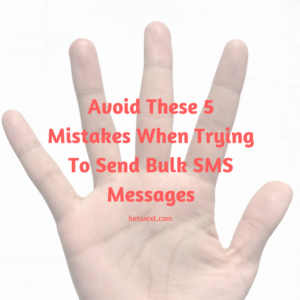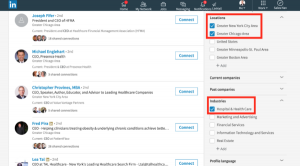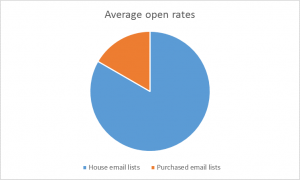We’ve all been there. Churn, cancellation, breaking up. Call it what you may, it hurts.
As it is in life, it is also true in business – when you go through a breakup, you should take the time to reflect, learn, and adjust accordingly. I am sure that you have heard this saying before, but it is worth repeating: “those that do not learn from history are doomed to repeat it” (George Santayana). Don’t put yourself into the “doomed” category out of the gate. Come up with a plan that’ll help you approach churn as a learning opportunity in the event that it happens (and it will).
What if I told you that if you created a well-orchestrated post-churn plan, it would increase your revenue by 50%. Would you do it? Now, that stat may or may not be accurate for your company’s particular situation (or anyone’s), but the point is that in the SaaS world, having a low churn rate is important. The difference of a 1-2% churn rate could mean thousands if not millions of dollars in revenue over the lifetime of a customer portfolio.
Information that you can collect from churned customers is priceless. With the proper plan and forethought, you can turn that lagging data into leading indicators. Churn can, in fact, be your ultimate churn mitigation tool.
But where to start? There are three key components you should think through when building out your framework. Let’s get started!
The Customer Story
The Customer Story may be the most important story that you’ll ever tell or read as a Customer Success Manager. This is where you tie all the details together to paint the full picture.
As a CSM, it is your job to disseminate this information across the organization and tell a story that will help guide and inform the current and future journeys your customers will take with your company.
Here are a few parts of the customer story that you must understand:
Onboarding. Kind of like “once upon a time,” every story has to start somewhere. How did your customer’s story start? In most cases, it begins with customer onboarding.
You should always track metrics around onboarding and the milestones that they should hit. Quickly onboarding and rapidly achieving value is one of the many retention tools. A few key metrics are:
- Average time to successfully onboard (the definition of “success” should be set with your customer)
- Average time to first value
- Sentiment scores with the onboarding experience (NPS)
Lifecycle Phase. As with any good story, there should be a plot, a character journey, or – in our customer’s case – a lifecycle. There are a few common phases in every lifecycle: onboarding, adoption, retention/expansion, renewal (then repeat the cycle at renewal). Keep in mind there may be more or less depending on your model.
It’s important to understand the sequence of events in your product that make up your lifecycle and how you can help influence each phase. When did you lose your customer? When do you lose most customers? There could be a telling trend there.
ROI. When does your customer reach that magical aha! moment in your product? The aha! moment is when it becomes obviously clear that you are the right business partner and are going to make them look like the hero to everyone in their organization. Did your customer achieve a return on their investment when using your product or service? What did they set out to achieve? So many questions, yet so important to answer!
Logging a customer’s answers (and formalizing how you do so) will really help you understand what’s most important to the customer at any given time.
Cancellation Reason: Not all stories have a happy ending, but there is generally a moral to the story. There are many reasons why a customer cancels, some of which you can control or influence, others not as much. If you work to understand the cancellation reasons, you can use your findings to inform the Sales and Product cycles.
Typical cancellation reasons include:
- Change in their business (financing, loss of executive sponsorship, etc.)
- Not achieving value
- Price
- Purchased too soon
- Competitor
Behind the Scenes
While the customer’s perspective is always valuable and telling, it is also important to consider the “behind the scenes snapshot.” You cannot tell the entire story without understanding the analytics of it all.
A few things to look at are:
Overall Health:
- Usage – Was your customer using your product? If not, understand why and use this info to influence future behaviors.
- Upgrade/Downgrades – Did your customer have any upgrade or downgrade events? Understand what perpetuated these events.
- Bugs – Did your customer experience any bugs when using your product? What was the time to resolution?
- Support Tickets – Some people view support tickets as engagement, I view them as a barrier to your customer’s success. Don’t get me wrong, the occasional support ticket is not a problem, but, for the most part, if your product is doing its job and is intuitively designed, then your customer should not have to contact support.
Sentiment Scores:
- I touched upon this a little bit above. Understand how your customer rated your Support (CSAT) and NPS over the duration of their lifetime with you. Were there any key indicators that there may be trouble in paradise? Did they even respond to any surveys? In most cases, silence is worse than an opinion.
Customer Success:
- What have you done lately to make your customer’s life easier? What are the proactive things that you have orchestrated to show the value of your product and your role in general? If you have to pause more than 15 seconds to think this through, you haven’t done enough.
Think through what metrics, measurements, or analytics are relevant to your world. Add them to your customer story to help complete that picture.
The End.. or just the beginning?
The final step in turning churn into your ultimate churn mitigation tool is aggregating all of your data/information into a consolidated location. I’ve talked about this before, but really, one customer story is just a story of one journey and one experience. When you tie multiple stories together, it becomes an actionable trend. Multiple data points that all point in the same direction are more impactful than one that stands alone.
Business & Finance Articles on Business 2 Community
(44)








